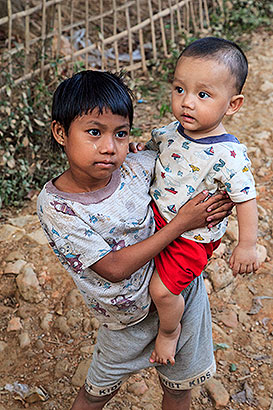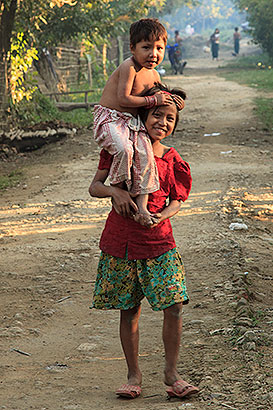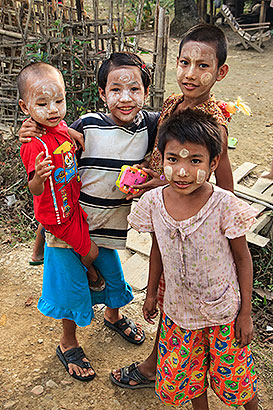Mrauk-U was the capital of the Arakanese Kingdom, from the time King Min Saw Mon established it (1433), through the reigns of 49 kings before the kingdom fell to the Burmese in 1784. It was an important regional trading center, and reached a population of 160,000 in the early 17th century. As the kingdom prospered, it poured resources into the building of around 700 temples and pagodas -- making Mrauk-U second only to Bagan in that respect.
Curiously, it is a bit difficult for tourists to get to Mrauk-U, and it is reported that less than 5,000 foreign visitors reach it in a typical year. Its "airport" is just a dirt field, and available roads make overland transit effectively impossible. The only feasible way to get to Mrauk-U is by boat from Sittwe, which is how we have arrived. The plus side of this is that Mrauk-U is not crowded with tourists, and we undoubtedly get a more authentic view of life and culture here.
UPDATE: as of 8/30/2012 access to Sittwe and Mrauk-U by foreigners has been suspended until further notice due to recent clashes between ethnic groups in the area.

Bandoola Kyaung (Monastery)

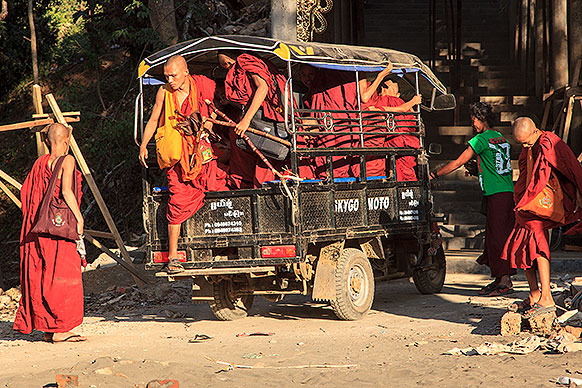
Haridaung Paya (Pagoda)
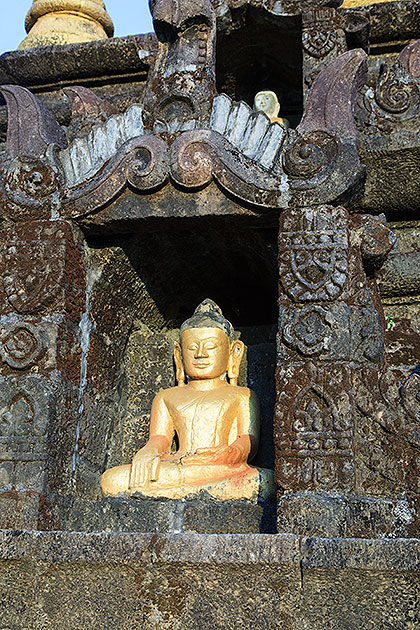
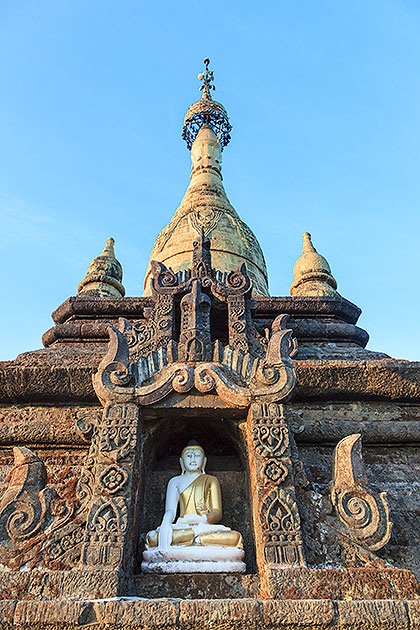
The Haridaung Paya, built around 1750, has some nicely maintained Buddhas.
Mrauk-U Central Market
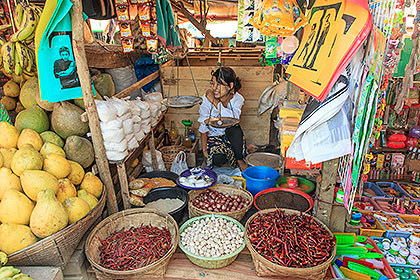

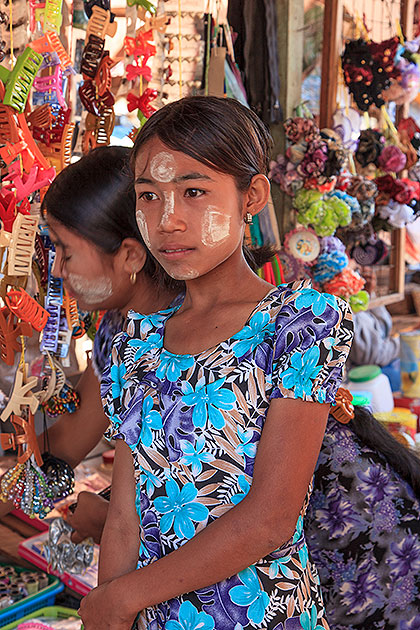
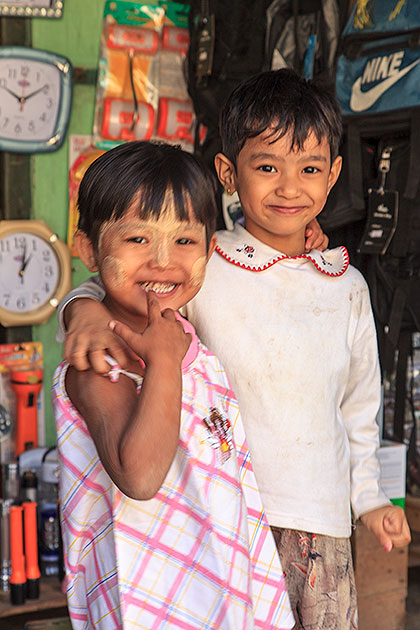
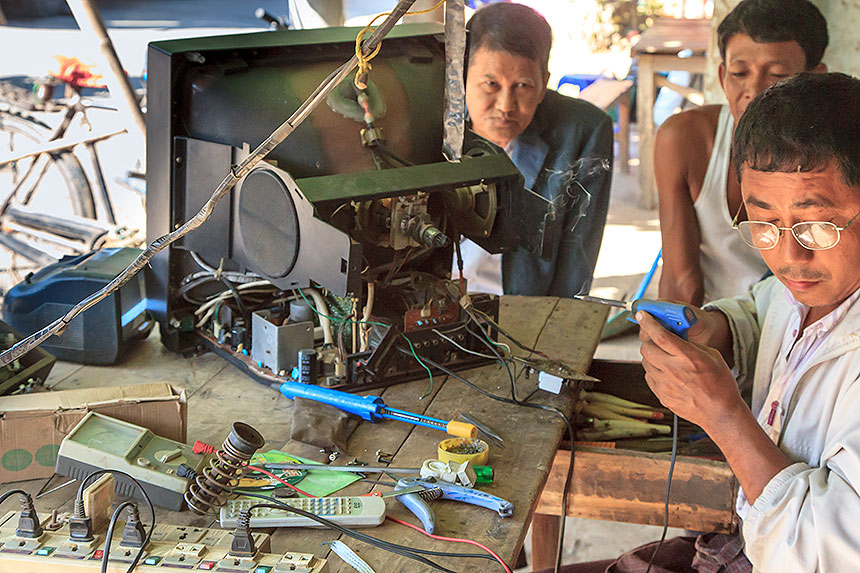
An electronics man offers street side TV repair.
Marching Monks
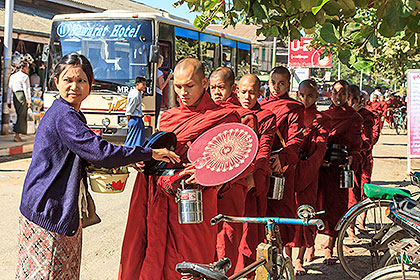

Monks making their rounds pass along a street next to the market, and are rewarded. The youngest are always last, but not neglected.
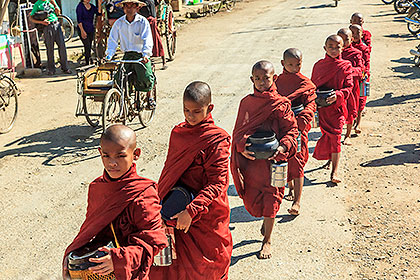
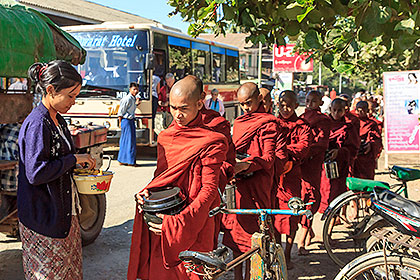
Daily Life, Near Shwegudaung Hill
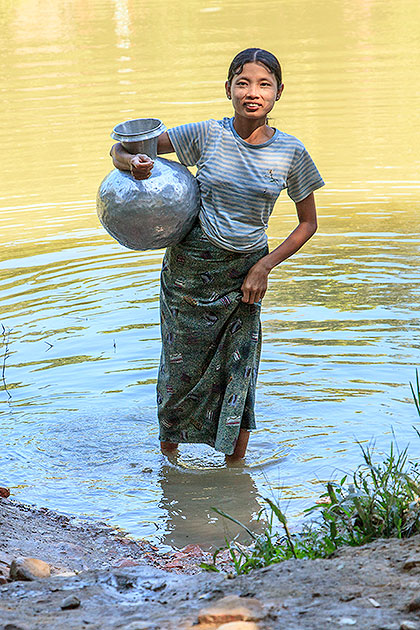
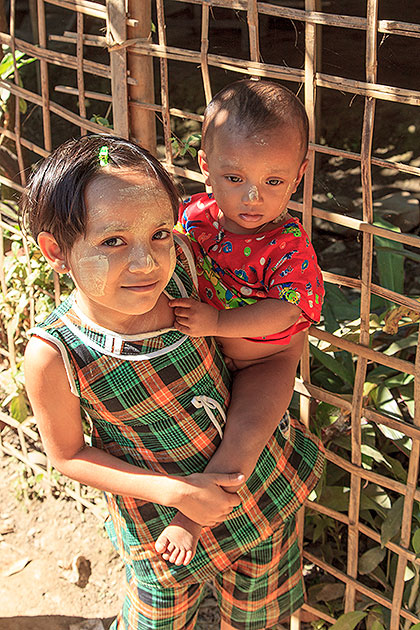
Children care for siblings while parents do chores. Hat making is a family occupation.
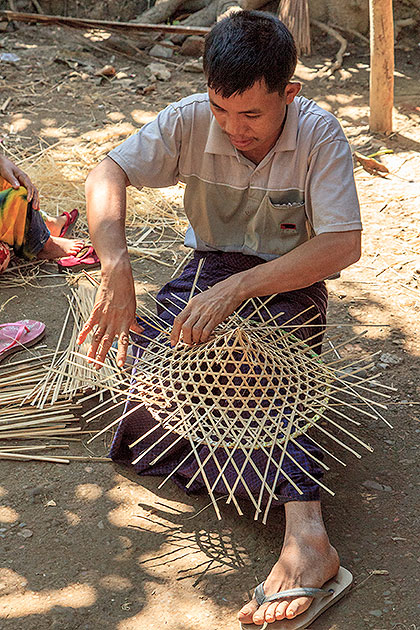


This girl seems to be hoping and waiting for her prince to come. Meanwhile, there is hat making.
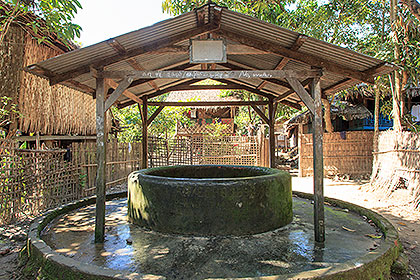
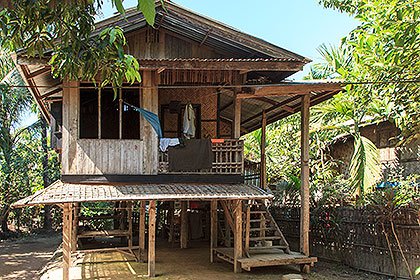
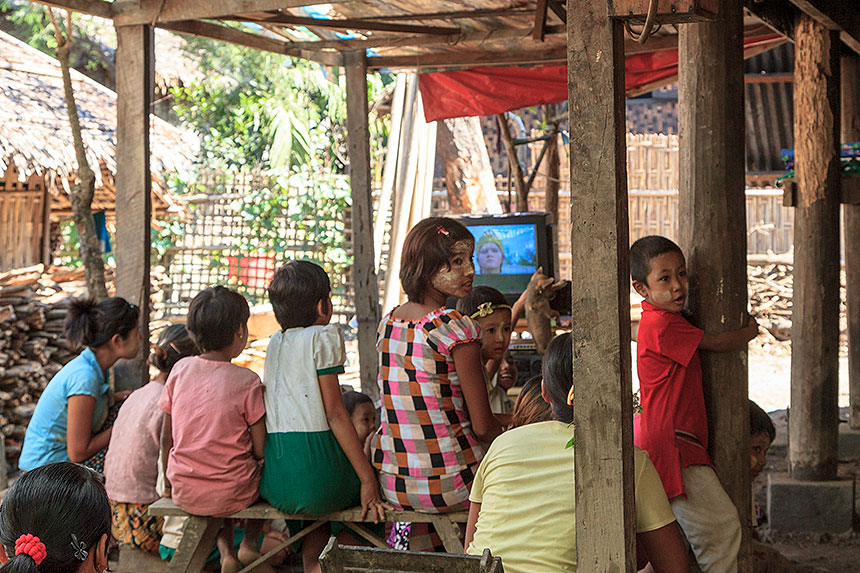
Home Theater.
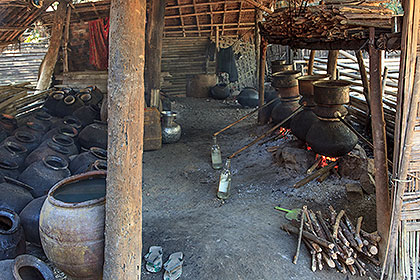
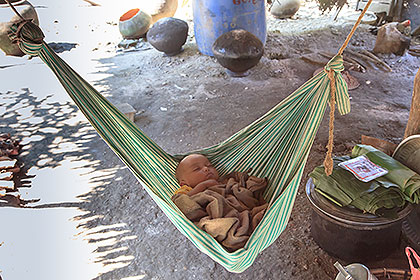
A baby enjoys a restful hammock, while a distillery operates next door.
Shite-thaung Temple (Shittaung Paya)
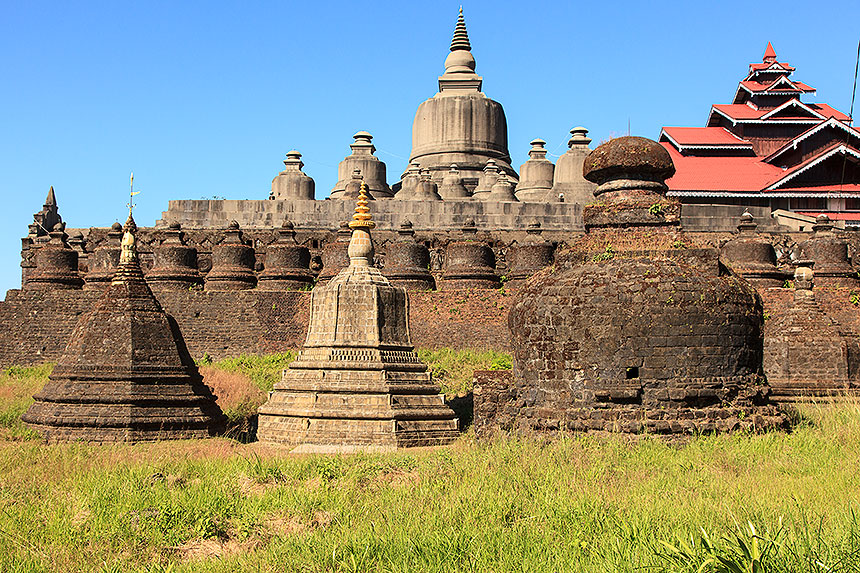
The Shite-thaung Temple (Shittaung Paya) is the most complex temple in Mrauk-U, and is considered the most important one. Powerful King Min Bin had it built around 1535-6, with an assortment of stupas surrounding a tall central one. It is also known as the "Temple of 80,00 Buddha Images" in reference to the quantity of sculptures housed within it.
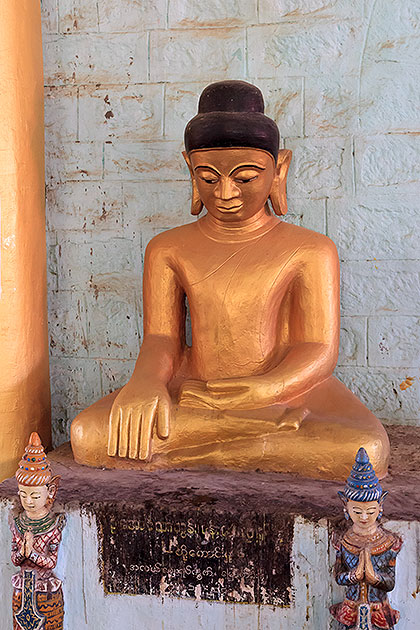
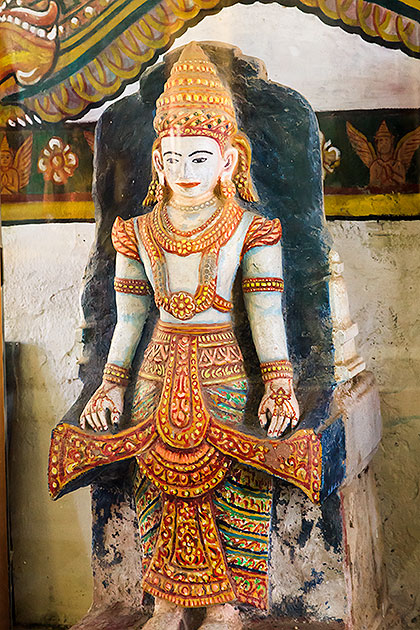
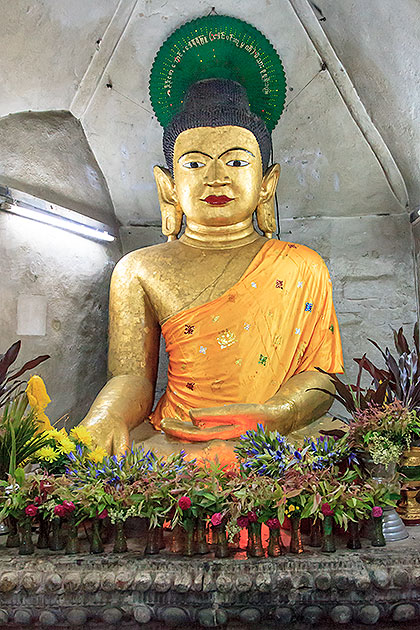
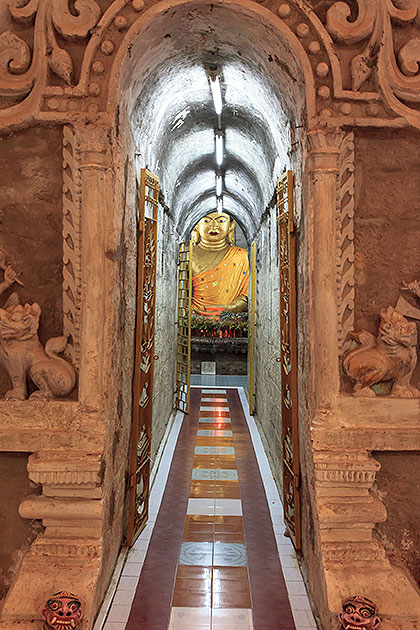
The Central Hall (above) is lined with Buddha reliefs and leads to a chamber with a large seated Buddha.

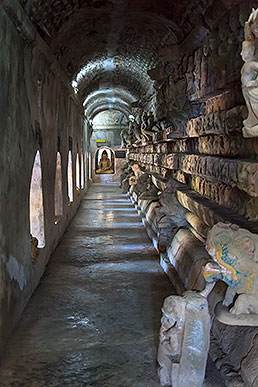
Encircling the Central hall are three other corridors, each with with very large numbers of reliefs and other sculptures.
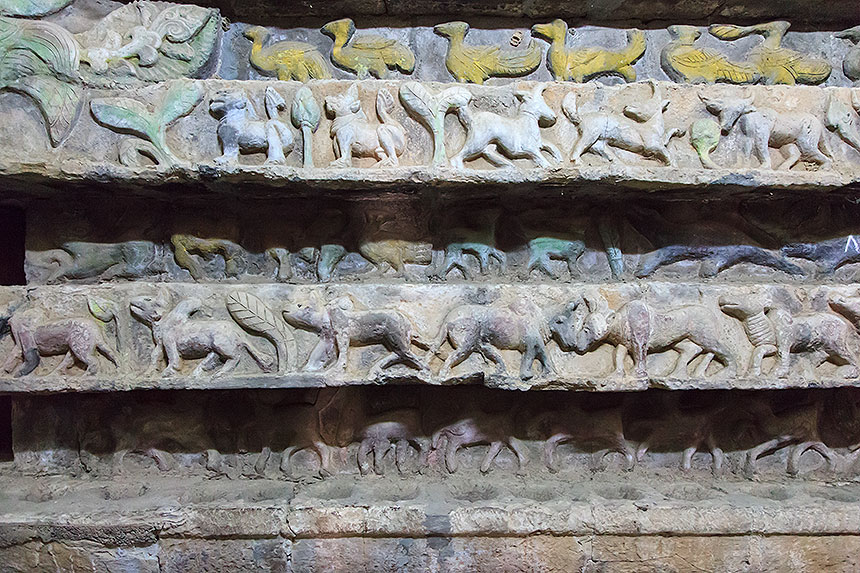
"The three corridors contain reliefs of Buddhas, Bodhisattva's, Kings of Spiritual abodes, Deva's, guardian spirits, the 550 Jatakas, Arakanese culture and animals, both real and mythical." [en.wikipedia.org/wiki/Shite-thaung_Temple]
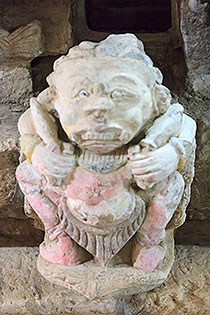
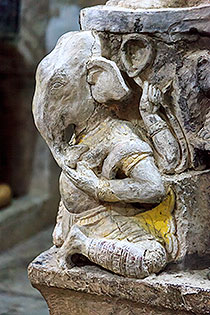
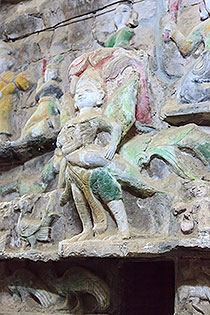
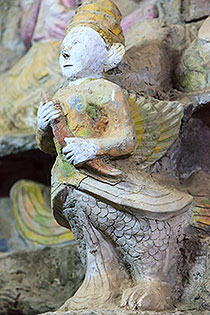
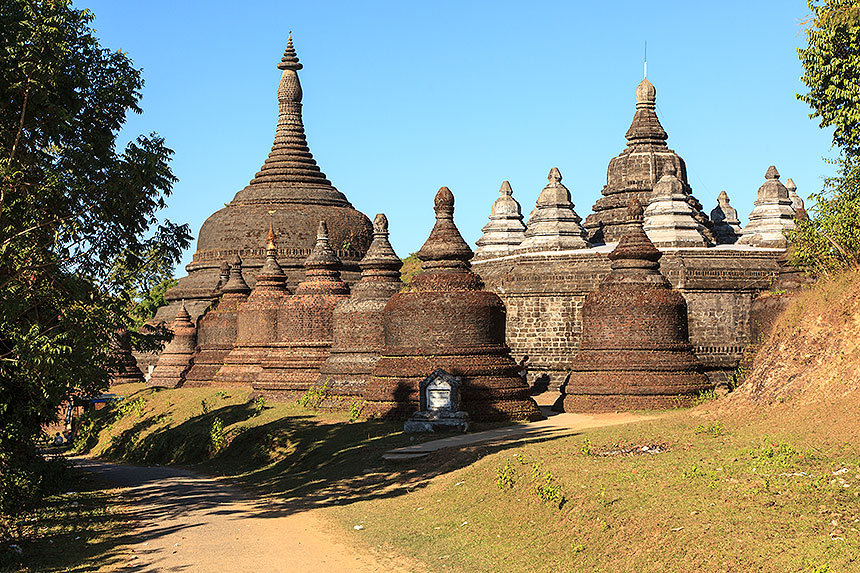
Andaw-thein Ordination Hall (at the northwest corner of the Shite-thaung Temple). It was built by King Minhlaraza in1521, and rebuilt by King Minrazagyi in 1596. Unfortunately we haven't enough time to look inside.
Koe-thaung Temple
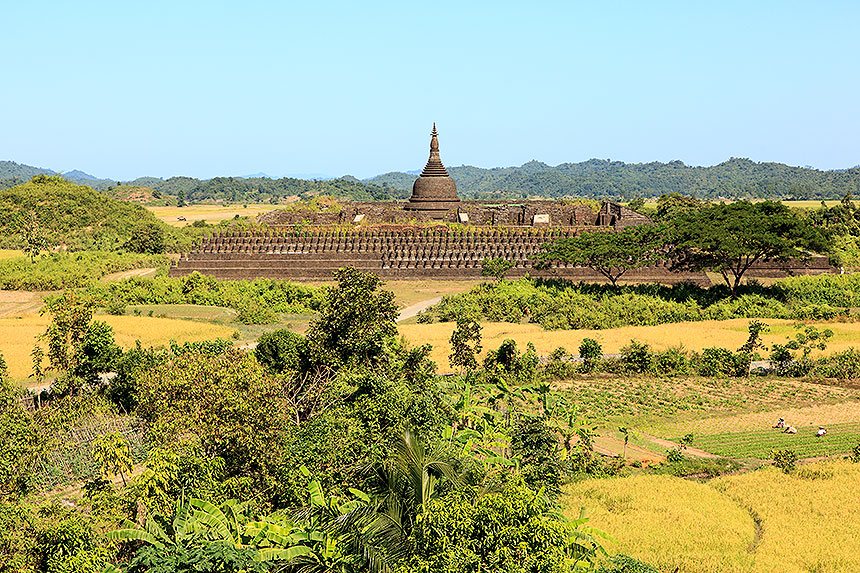
Koe-thaung Temple ("Temple of 90,000 Buddha images"), was built in 1553 by King Min Bin's son, King Mintaikkcha, in a rather obvious effort to outdo his father's collection by another 10,000 images.
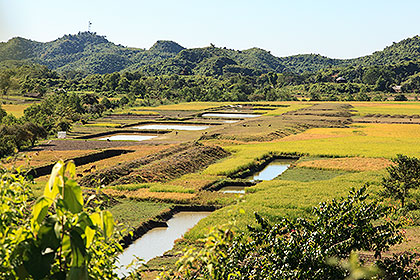
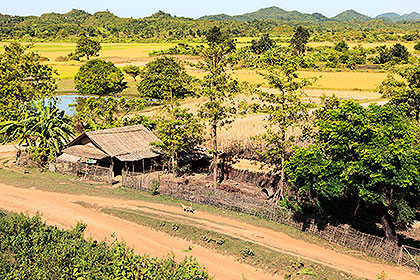
The temple is closely surrounded by agriculture.

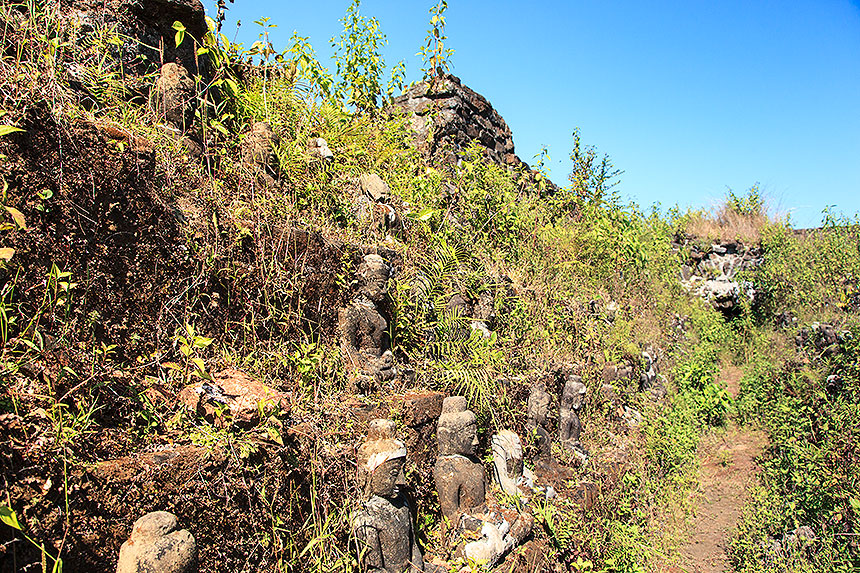
Crumbling walls reveal many Buddha sculptures near the temple.
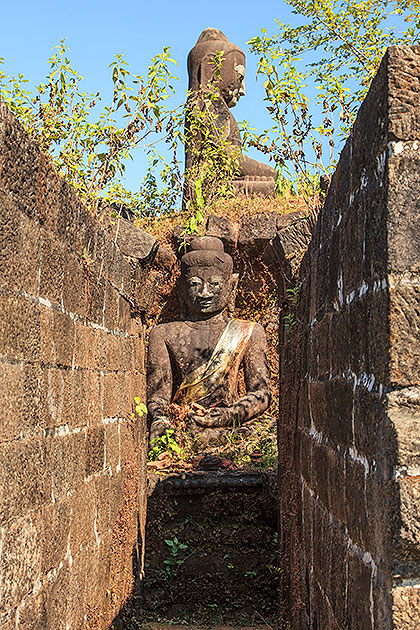

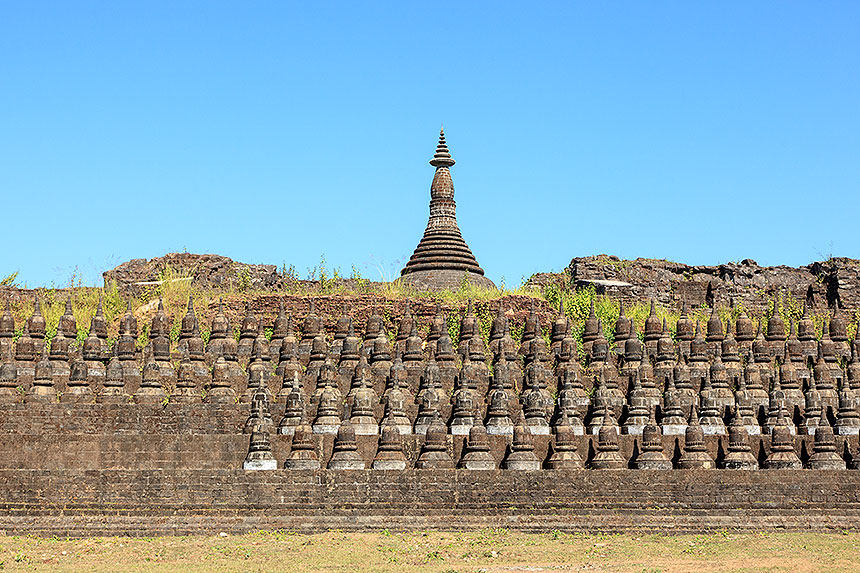
The temple is awash in stupas outside and Buddha sculptures inside.

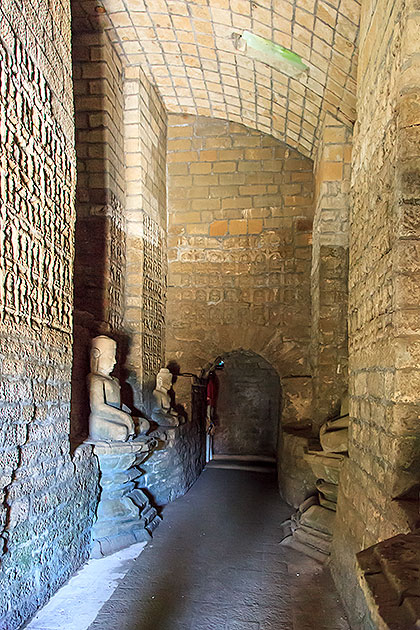
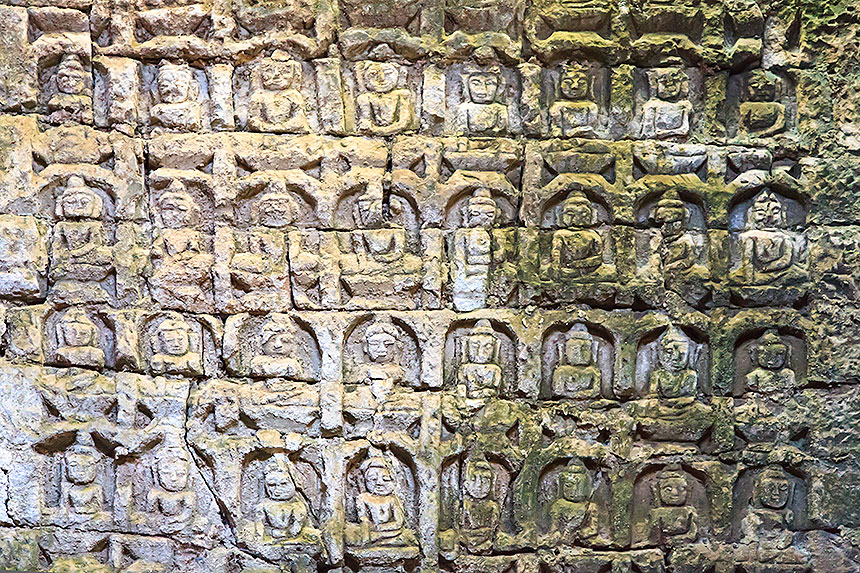
Just a few of the 90,000 Buddhas the temple is said to hold.

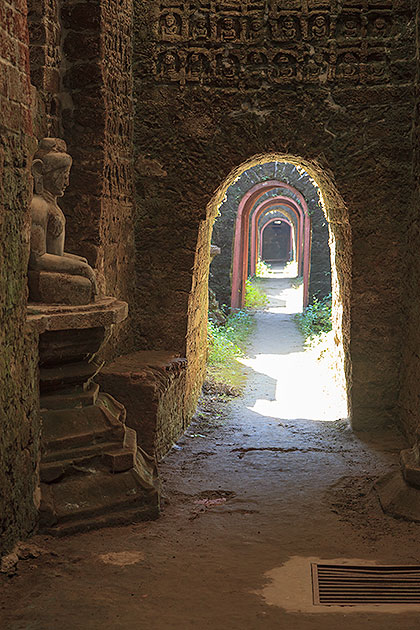
Mysterious corridors connect different parts of the sprawling temple.
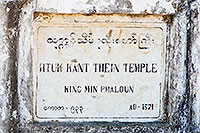
Htuk Kant Thein Temple (Dukkanthein Paya)
Like the others, this temple served a defensive military purpose as well as a religious one, and it shows in the bunker-like architecture. It was built by King Min Phalaung in 1571.
"The Htukkanthein has three chambers, rotating clockwise inwards. The entire temple has a total of 180 Buddha images in niches (179 smaller ones along the corridors, and 1 at the central vaulted chamber). On each side of the niches are sculpted male and a female figures said to represent the donors who made the construction of the temple possible." [en.wikipedia.org/wiki/Htukkanthein_Temple]
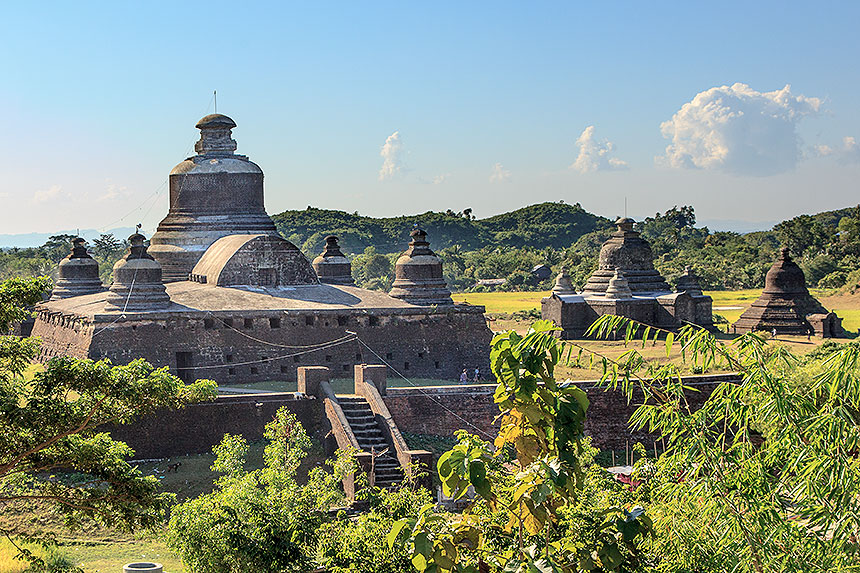
Here the Dukkanthein Paya is seen from the Shite-thaung Paya.
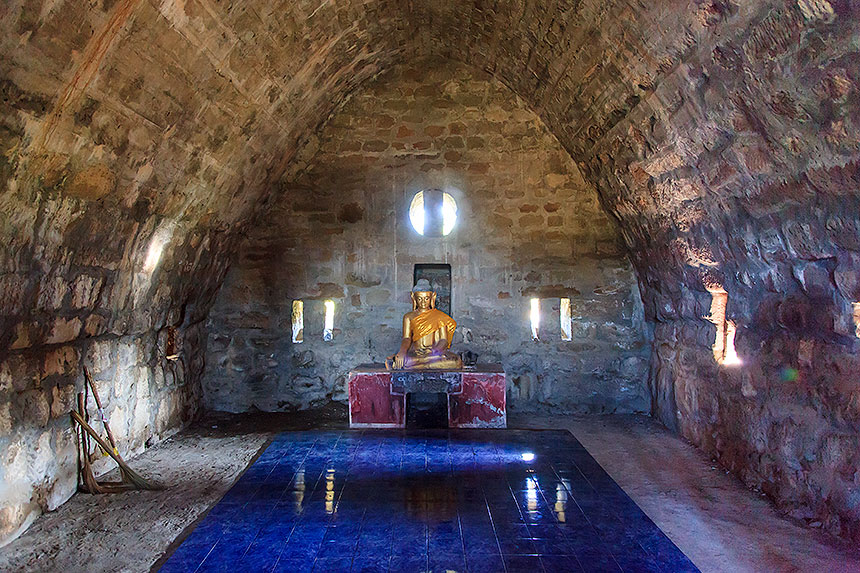
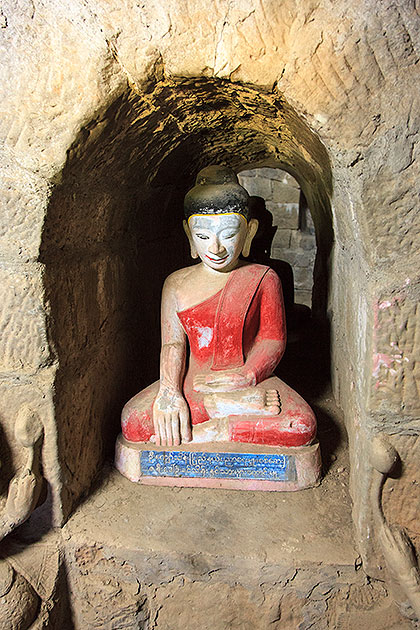
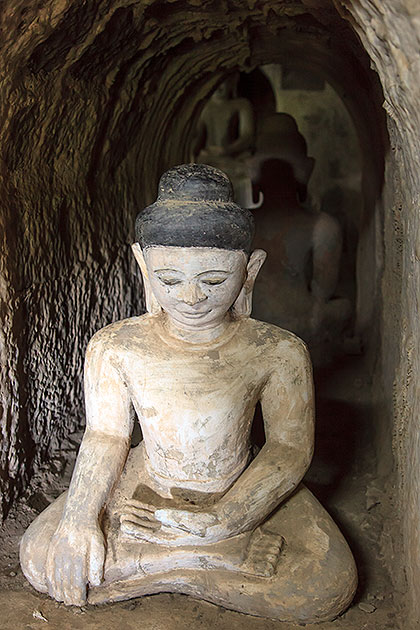
Some of the many Buddha images in cloisters and niches.
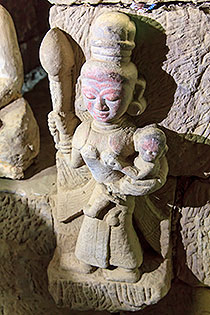
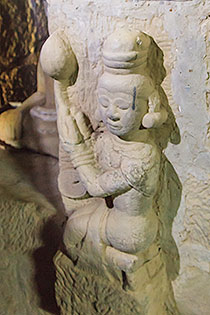
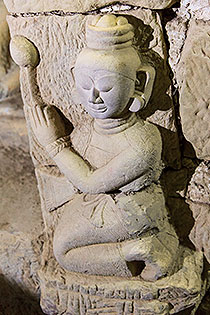
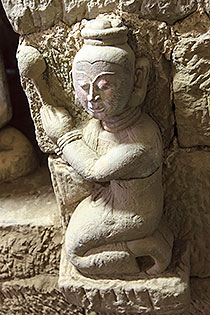
Other images are of common people, showing examples of all 64 traditional hair styles of Mrauk-U.
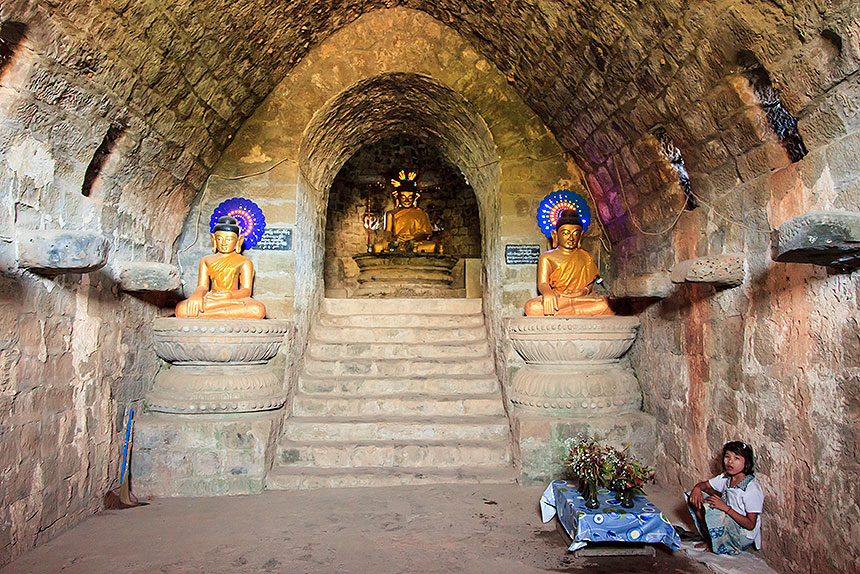
After circling the center three times the passageway reaches the central vault. A window here is positioned so that at dawn the sun's rays shine directly onto the main Buddha image. We are not here at dawn, but the Buddha is illuminated by colored lights for us.
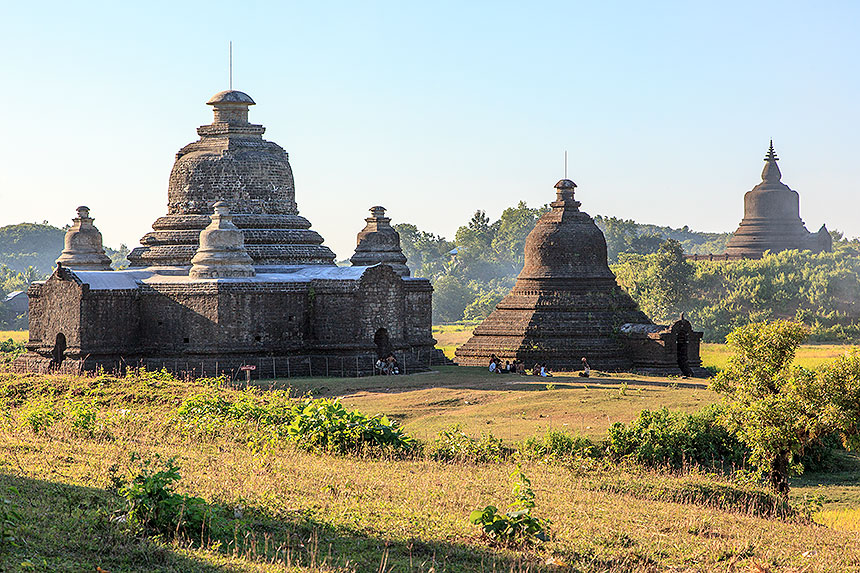
The Laymyetnha Paya, looking like a smaller version of the Dukkanthein Paya, is just a bit further north, but it is 140 years older.
Some More Daily Life, This Time Near the Laymyetnha Paya
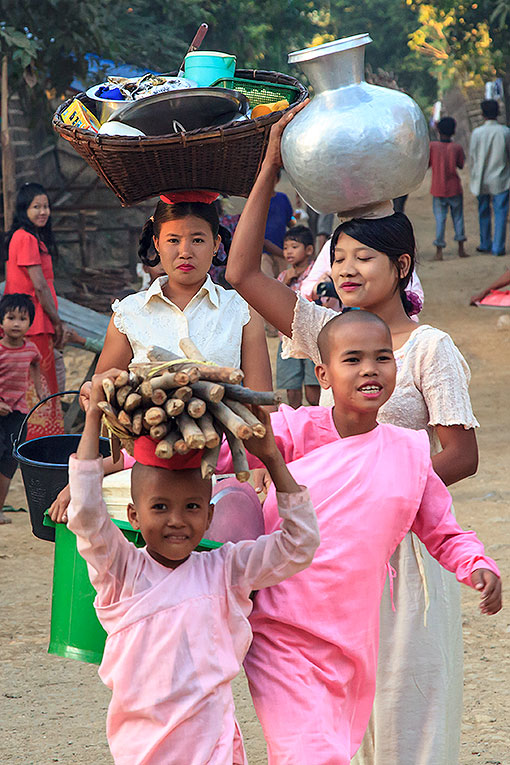
Party-goers.
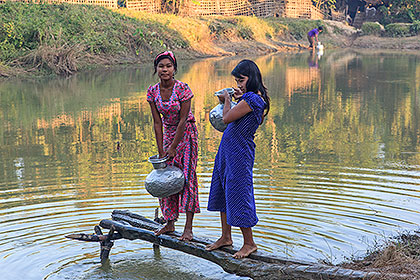
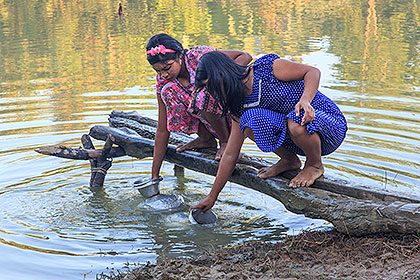
Water collection.
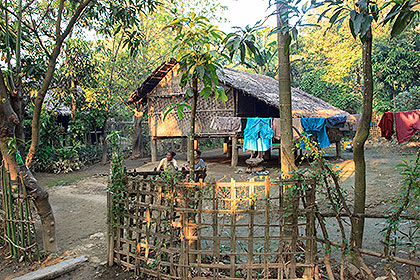
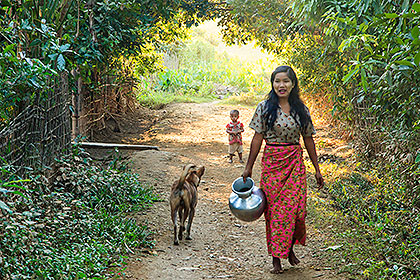
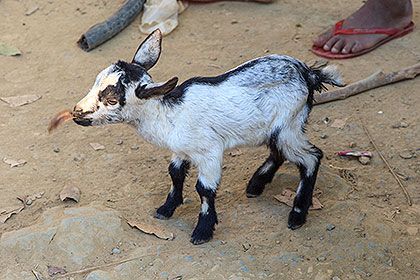
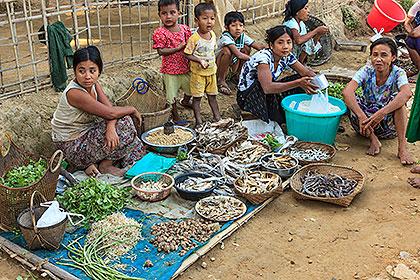
A neighborhood market awaits customers, while a young goat samples a tasty leaf.
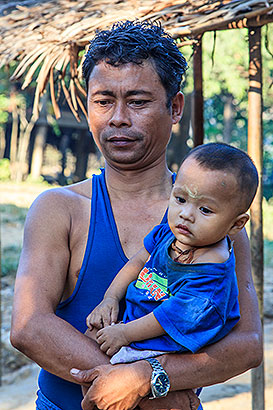
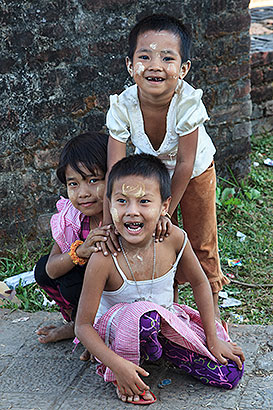
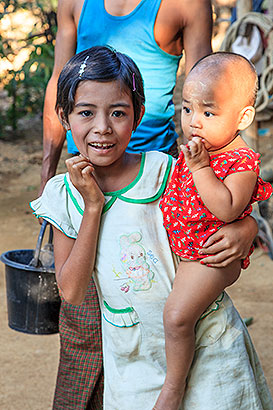
Kids are always glad to meet visitors, and happy to be photographed.
